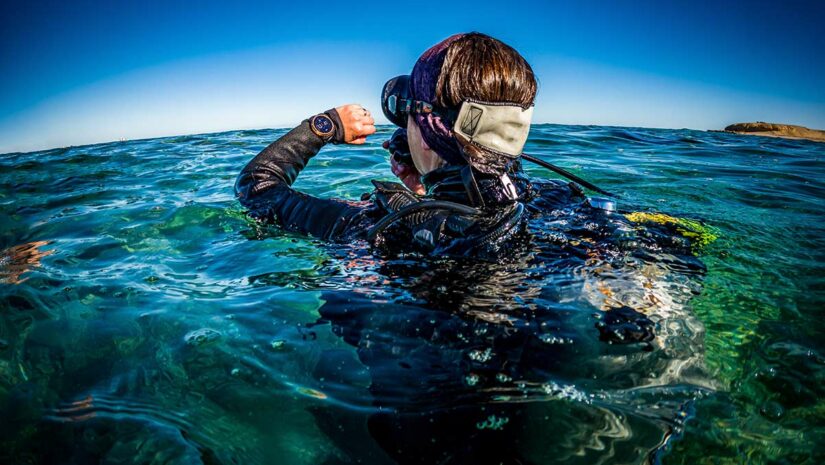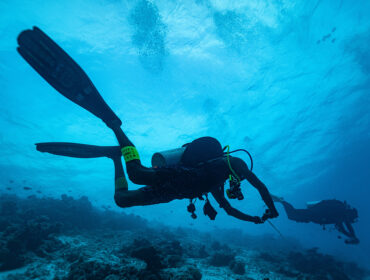Diving into the world of underwater exploration? If so, a reliable dive computer is a must-have piece of dive equipment in your arsenal. They provide crucial information regarding depth, time, and decompression limits, ensuring a safe and enjoyable diving experience. Whether you’re just getting started with scuba diving or you’re a seasoned pro, understanding how diving computers work is key to ensuring dive safety.
For many enthusiasts, one of the big questions is: “What are the best diving computers?” With countless models on the market, each boasting an array of features, it can be overwhelming. Do you need advanced decompression monitoring? How about ascent rate monitoring? And is a dive computer connectivity feature for logging dives essential for you?
If these questions sound familiar, you’re in the right place. We’ll delve deep into the features to consider when buying a dive computer and even offer a handy dive computer brands review. By the end, you’ll have all the info you need to make an informed decision and enhance your underwater adventures.
What is a Diving Computer?
When it comes to scuba diving, safety should always be the top priority. A diving computer is a wrist-worn or console-mounted device that uses algorithms and sensors to measure and provide real-time critical dive data, such as depth, temperature, time, and nitrogen absorption. They play a critical role in ensuring divers stay within safe diving limits.
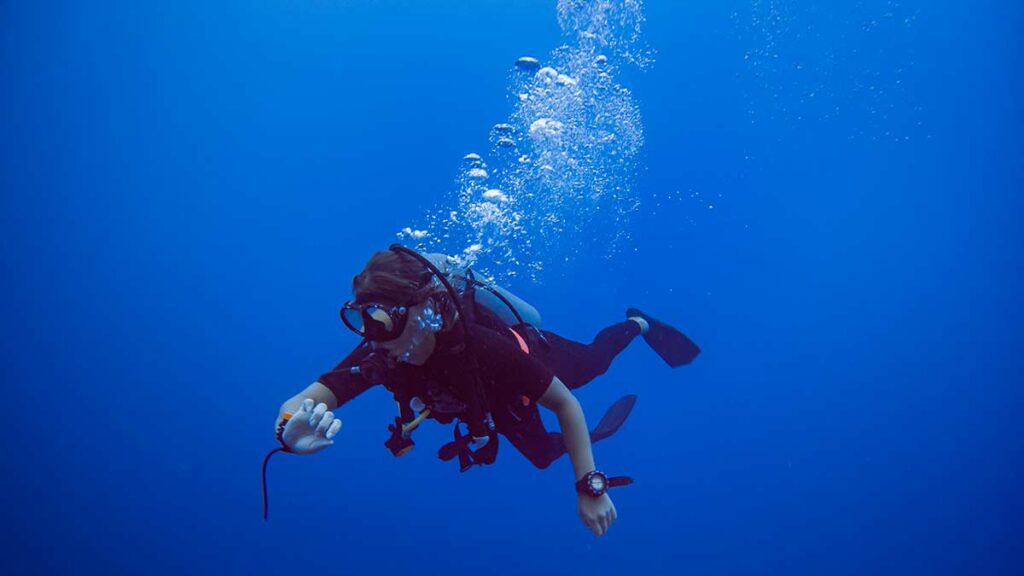
Basic Functions of Diving Computers
Most diving computers offer a range of basic functions to assist divers in their underwater adventures. These functions allow divers to have a comprehensive understanding of their dive profiles.
Real-time Depth and Dive Time Monitoring
Depth and time monitoring is one of the most important features of diving computers. These devices continuously measure your depth and time underwater, providing you with real-time information. This allows you to keep track of your dive profile and stay within safe limits. By monitoring your depth, you can avoid going too deep and risking decompression sickness.
Ascent Rate Monitoring
Diving computers track the diver’s ascent rate to prevent rapid ascents, which can lead to decompression sickness. By providing visual and audible warnings, these devices help divers maintain a safe ascent rate and avoid potential risks.
Decompression Stops
Decompression calculation is another crucial feature of diving computers. These devices use complex algorithms to calculate your decompression status and provide you with accurate information on when it is safe to ascend. By taking into account factors such as depth, time, and gas mix, diving computers can help you avoid decompression sickness and to allow the body to safely eliminate excess nitrogen. These stops are essential for safe return to the surface.
Remaining Dive Time
Diving computers estimate the remaining dive time based on the diver’s current nitrogen levels and the no-decompression limit for the depth. This information allows divers to plan their dives effectively and avoid exceeding their safe dive limits.
Current Nitrogen Levels
By continuously monitoring the diver’s nitrogen levels, diving computers provide valuable information on the body’s saturation status. This helps divers understand their risk of decompression sickness and make informed decisions during their dives.
Gas Mix and Nitrox Compatibility
Gas mix and nitrox compatibility is a feature that is particularly useful for divers who use enriched air nitrox (EANx) as their breathing gas. Diving computers with this feature can calculate and display the maximum depth and bottom time limits for different gas mixes. This will ensure that you stay within safe limits and avoid oxygen toxicity.
Wireless connectivity for data transfer and updates
Wireless connectivity for data transfer and updates is a convenient feature that allows you to connect your diving computer to a computer or mobile device. This enables you to transfer dive data, such as dive profiles and logbook information, for further analysis and record-keeping. It also allows you to update the firmware of your diving computer, ensuring that you have the latest features and improvements.
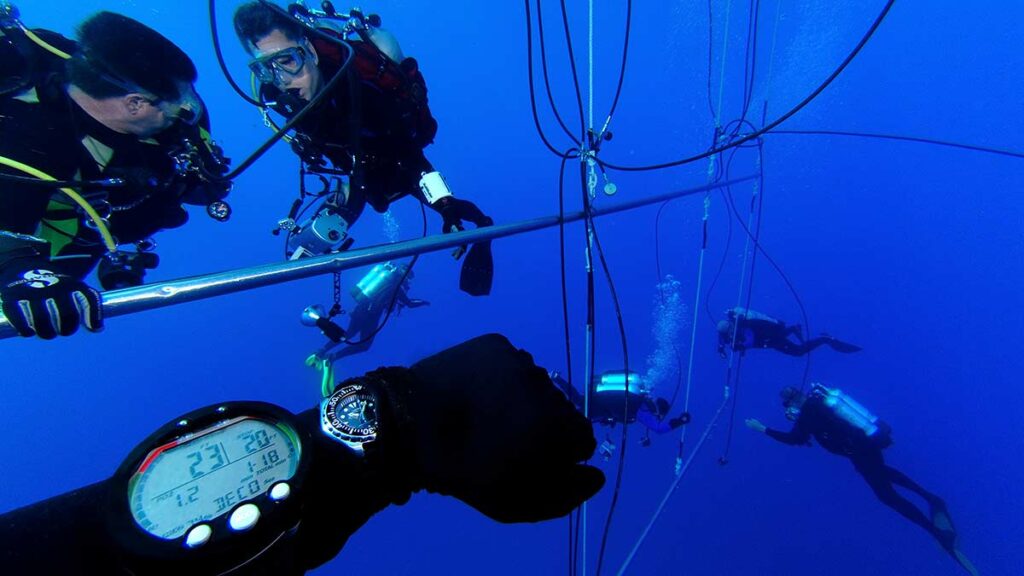
Types of Diving Computers
When it comes to choosing a diving computer, there are two main types to consider: wrist-mounted diving computers and console diving computers.
But before we dive into the specifics of these two types, let’s take a moment to appreciate the incredible technological advancements that have revolutionized the world of diving. Diving computers have come a long way since their inception. They have evolved from simple depth and time calculators to sophisticated devices that provide divers with a wealth of information to enhance their underwater experiences.
Brands including Mares, Shearwater, Suunto, Cressi, Aqualung, Oceanic, and more, build some of the best dive computers on the market.
Wrist-Mounted Diving Computers
Wrist-mounted diving computers, as the name suggests, are worn on the diver’s wrist like a watch. These compact and lightweight devices are not only convenient but also easy to use.
Imagine yourself descending into the depths of the ocean, surrounded by vibrant marine life. With a wrist-mounted diving computer, you can easily keep track of your depth, dive time, and decompression limits. These devices feature a clear display and an intuitive interface, allowing you to access essential data at a glance.
Wrist-mounted diving computers come equipped with integrated compasses, allowing you to navigate underwater with ease. Others have wireless connectivity, enabling you to transfer your dive data to your computer or smartphone for further analysis and sharing with fellow divers.
Furthermore, wrist-mounted diving computers often have multiple diving modes, catering to different types of dives. Whether you’re planning a recreational dive, a deep dive, or a nitrox dive, these devices can adapt to your specific needs, providing you with accurate and reliable information throughout your underwater journey.
Wrist-Mounted Diving Computers at Scuba.com
Console Diving Computers
Console diving computers, on the other hand, are designed to be mounted on the diver’s console, alongside other instruments such as pressure gauges and compasses. These larger devices are typically favored by technical divers who require more detailed information about their dive.
Imagine yourself exploring a shipwreck deep below the surface, surrounded by artifacts from a bygone era. Console diving computers are the perfect companions for such dives, as they offer more advanced features and larger displays. These devices provide technical divers with comprehensive data, including real-time gas mixtures, ascent rates, and even multi-gas capabilities.
Console diving computers often have multiple pressure sensors. This allows you to monitor your tank pressure and air consumption throughout your dive. Some models even have integrated digital compasses, ensuring that you never lose your way in the underwater maze of a complex dive site.
Moreover, console diving computers are built to withstand the rigors of technical diving. They are often rugged and durable, capable of withstanding extreme depths and harsh underwater conditions. These devices are designed to be reliable and accurate, ensuring that you can focus on your dive without worrying about your equipment.
Console Diving Computers at Scuba.com
Plus: Air-Integrated Dive Computers
An air-integrated dive computer is a specialized type of dive computer designed to provide scuba divers with comprehensive and real-time information about their dive, specifically focused on monitoring their air supply. Like other dive computers, it serves as a vital tool for underwater enthusiasts, ensuring safety and enhancing the overall diving experience.
The distinguishing feature of an air-integrated dive computer is its ability to seamlessly track and display information related to a diver’s air consumption. It incorporates a pressure sensor that connects to the scuba tank. This sensor continuously measures the air pressure, enabling the dive computer to calculate and display the remaining air supply based on the diver’s depth and breathing rate.
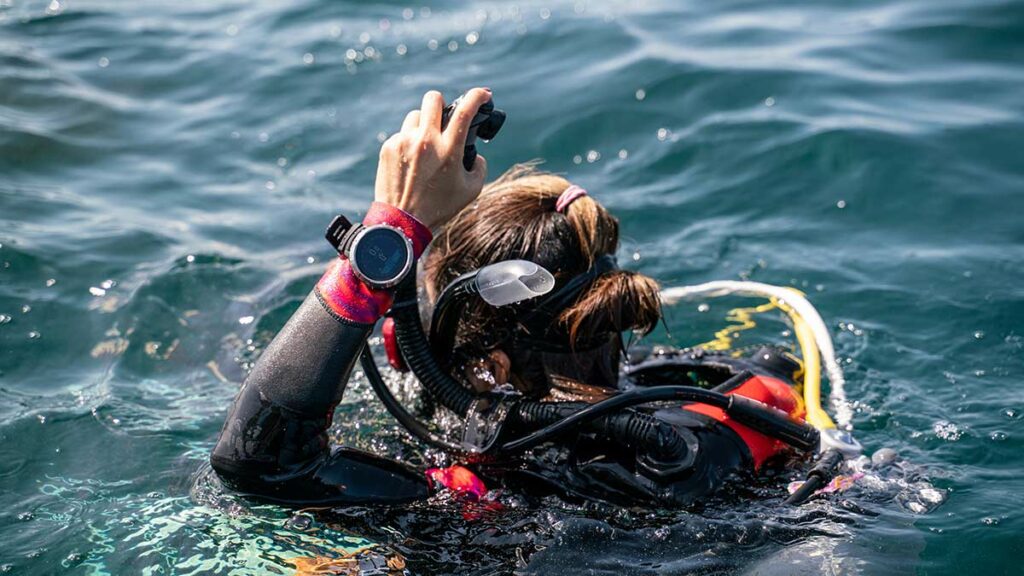
Key Features to Look for in a Diving Computer
When selecting a diving computer, it is important to consider certain key features that will enhance your diving experience and safety.
User-Friendly Interface
A diving computer with a user-friendly interface is essential. Look for a device with easy-to-read displays and intuitive menu navigation. This ensures that divers can quickly access important information without confusion or distraction. Imagine being able to effortlessly navigate through the menu options and view critical data such as depth, dive time, and decompression information at a glance. With a user-friendly interface, you can focus more on enjoying your dive and less on deciphering complicated instructions.
Furthermore, some diving computers offer customizable display settings. This allows you to personalize the information you see on the screen. You can choose to display additional data such as water temperature, compass readings, or even a graphical representation of your dive profile. This level of customization ensures that you have the information you need right at your fingertips.
Backlight and High Contrast Display
Backlight and high-contrast display are important features for divers who often dive in low-light conditions or murky waters. These features ensure that you can easily read and interpret the information displayed on the diving computer, even in challenging visibility conditions. The backlight illuminates the display, making it visible in dark environments, while the high-contrast display enhances readability in various lighting conditions.
Some diving computers even offer adjustable backlight settings, allowing you to customize the brightness based on your preferences and the diving conditions. Whether you prefer a subtle glow or a powerful illumination, having control over the backlight ensures optimal visibility in any situation.
Depth Rating and Decompression Capability
Check the depth rating of the diving computer to ensure it can handle the depths at which you plan to dive. Different diving computers have varying depth limits, so it is crucial to select one that matches your diving ambitions. Whether you are exploring shallow reefs or venturing into the depths of a shipwreck, having a diving computer that can accurately track your depth is essential for your safety.
Additionally, consider the device’s decompression capabilities and whether it can accommodate different dive profiles and dive tables. Some diving computers offer multiple gas mix support, allowing you to switch between different breathing gases during your dive. This feature is particularly useful for technical divers who engage in advanced diving techniques.
Furthermore, advanced diving computers utilize algorithms to calculate decompression stops and ascent rates, ensuring that you ascend safely and minimize the risk of decompression sickness. These algorithms take into account factors such as depth, time, and nitrogen absorption to provide accurate and reliable decompression information.
Additional Features to Enhance Your Diving Experience
In addition to safety benefits, diving computers also enhance your overall diving experience by providing valuable assistance and convenience.
Integrated Compass
When it comes to exploring the underwater world, navigation is key. Diving computers often come equipped with compasses, allowing you to navigate underwater with ease. This feature eliminates the need for separate compasses. It also enhances your ability to explore different dive sites and navigate back to your entry point. Whether you’re exploring a vibrant coral reef or searching for a hidden shipwreck, the built-in compass on your diving computer will be your trusty guide.
Dive Logging and Analysis
These devices also offer dive logging and analysis capabilities. Imagine being able to review and analyze important data from your dives, such as depth profiles and dive durations. With a diving computer, this functionality becomes a reality. By saving and organizing this data, you can gain valuable insights into your diving habits and progress.
By reviewing your dive logs, you can identify patterns in your diving behavior. Maybe you notice that you tend to reach certain depths more frequently or that you consistently have longer dive durations during certain times of the year. These patterns can help you understand your preferences and tendencies as a diver to tailor future dives to your liking.
Furthermore, dive logging and analysis can help you track your progress as a diver. By comparing data from your current dives to previous ones, you can see how you’ve improved over time. Maybe you’ve increased your maximum depth or extended your bottom time. These milestones are not only rewarding to see but also indicative of your growth as a diver.
Technological Advancements
Advancements in sensors, algorithms, and display technologies are expected to make diving computers even more accurate, efficient, and user-friendly. Future models may incorporate virtual reality (VR) capabilities, offering immersive dive simulations and enhanced training opportunities.
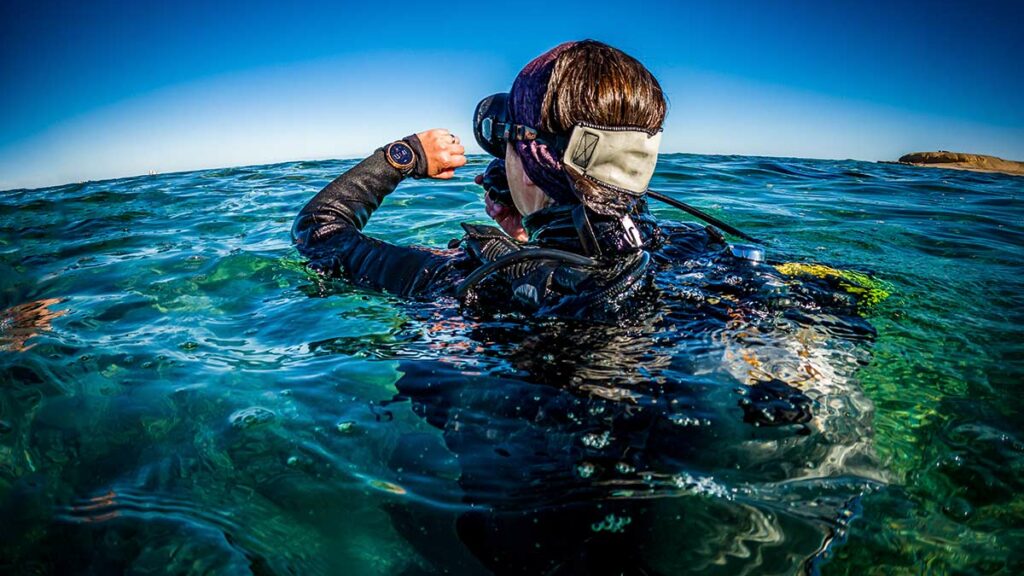
Choosing the Right Diving Computer
With a wide range of diving computers available in the market, selecting the right one can be overwhelming. Consider the following factors to make an informed decision:
Considerations for Beginners
If you are new to diving, opt for a user-friendly diving computer with clear displays and straightforward menus. Look for models that provide audible and visual alarms for added safety.
Advanced Features for Experienced Divers
Experienced divers may prefer diving computers with advanced features such as air integration, which allows you to monitor your tank pressure directly on the computer. Additional features like multi-gas capability and wireless connectivity can also enhance your diving experience.
Maintenance and Care for Diving Computers
To extend the lifespan of your diving computer and ensure its accuracy, regular maintenance and care are essential.
Regular Cleaning and Storage
After every dive, clean your diving computer thoroughly with fresh water to remove salt and debris. Proper storage, away from direct sunlight and extreme temperatures, will also help maintain its performance.
Battery Replacement and Servicing
Your diving computer’s battery needs to be in good condition. Replace the battery as recommended by the manufacturer and have the device serviced regularly to ensure optimal functionality.
Conclusion
Diving computers offer numerous benefits, ranging from enhancing safety to improving the overall diving experience. Whether you are a beginner or an experienced diver, investing in a reliable diving computer is a wise decision that can significantly enhance your underwater adventures.
Stay informed about the latest advancements in diving computer technology to make the most out of your diving experiences and explore the underwater world with confidence.

